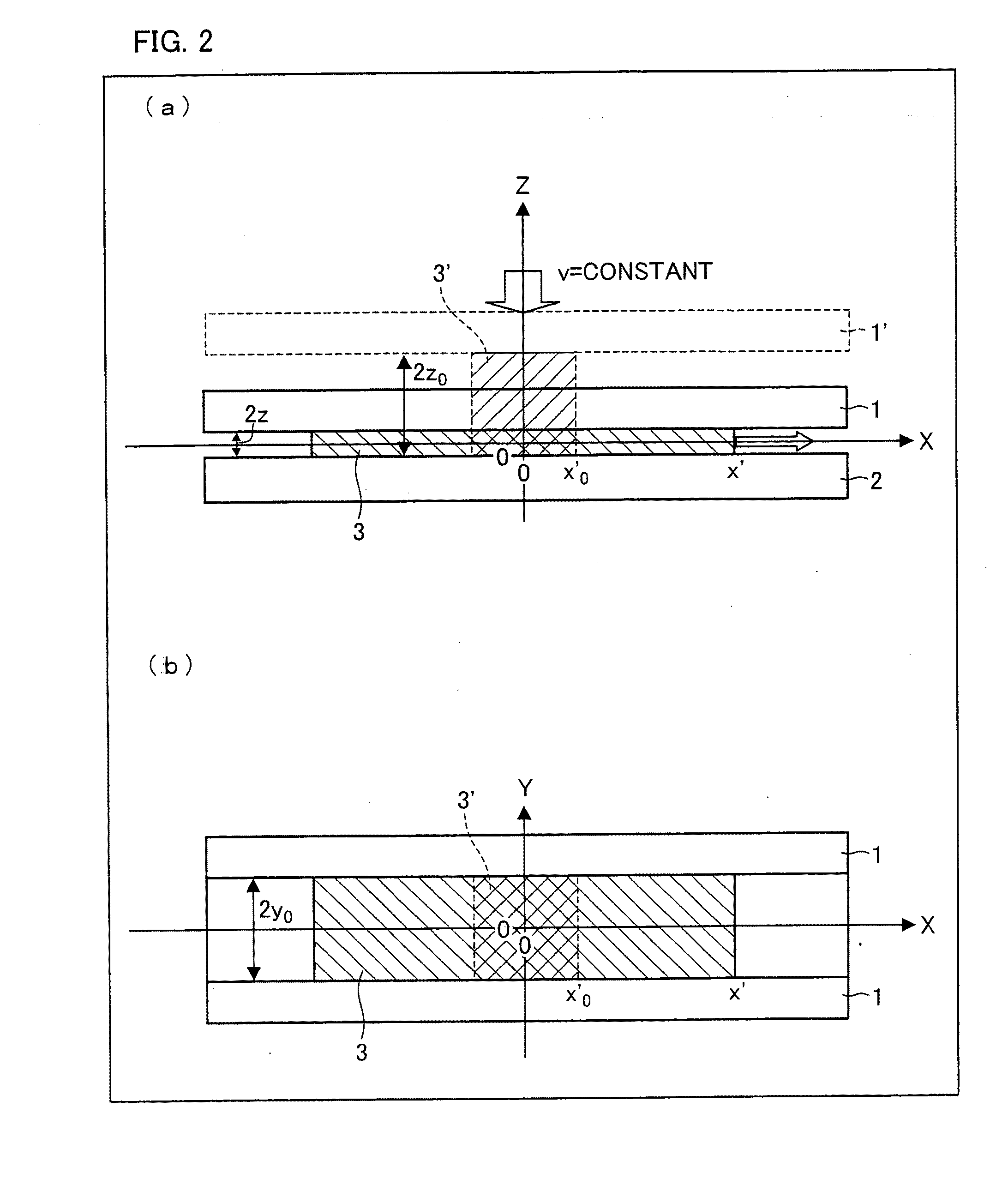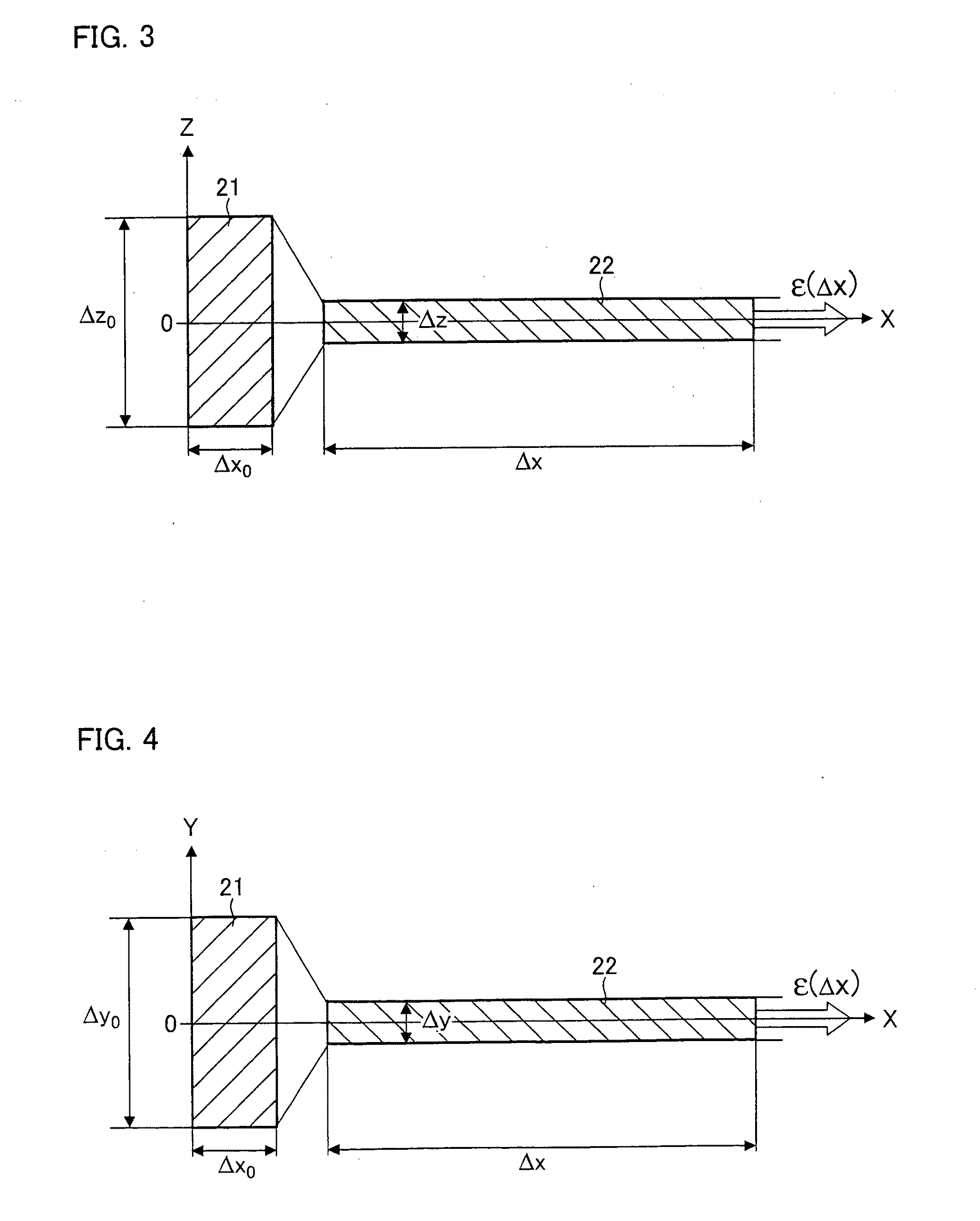Polymer crystalline materials
a technology of polymer crystalline materials and crystalline materials, applied in the direction of natural mineral layered products, cellulosic plastic layered products, transportation and packaging, etc., can solve the problems of known method of producing crystalline substances, inability to produce bulk oriented melts, and inability to produce polymer crystalline materials, etc., to achieve excellent mechanical strength, heat tolerance, and transparency.
- Summary
- Abstract
- Description
- Claims
- Application Information
AI Technical Summary
Benefits of technology
Problems solved by technology
Method used
Image
Examples
example 1
Methods
[0142]Isotactic polypropylene (referred to as “iPP”) used in elongation crystallization was prepared by the inventors of the present invention and had Mw=30×104 and Mw / Mn=30 (equilibrium melting point Tm0=187.3° C.), where “Mw” is the weight average molecular weight and “Mn” is the number average molecular weight. It was assumed that Tm0 for Mw was identical with Tm0 of Mw determined in “K. Yamada, M. Hikosaka et al., J. Mac. Sci. Part B-Physics, B42 (3 & 4), 733 (2003)”.
[0143]The iPP thus prepared was shaped into a rod shape (=columnar shape) and placed on the lower transparent plate 2 of the Compression-type crystallization apparatus 10 (hereinafter referred to as “crystallization apparatus”) of FIG. 1. Then, the upper transparent plate 1 was placed on top of the rod-shaped iPP. The iPP under this condition was melted at a temperature of 200.0° C. to give the iPP melt. The iPP melt was then cooled at a cooling rate of 30° C. / min to a crystallization temperature Tc=150° C. (...
example 2
Methods
[0159]The iPP used in Example 2 had Mw=33.5×104 and Mw / Mn=30 (equilibrium melting point Tm0=187.4° C.).
[0160]The iPP thus prepared was shaped into a rod shape (=columnar shape) and placed on the lower transparent plate 2 of the crystallization apparatus of FIG. 1. Then, the upper transparent plate 1 was placed on top of the rod-shaped iPP. The iPP under this condition was melted at a temperature of 192.0° C. for three minutes to give the iPP melt. The iPP melt was then cooled at a cooling rate of 30° C. / min to a crystallization temperature Tc=150° C. (supercooling degree ΔT=37.4 K). Then, elongation crystallization (“isothermal elongation crystallization”) was performed by pressing the sample (iPP melt) at a rate v=0 to 10 mm / s. The elongation strain rate ε was 0 to 3×103 s−1. It should be noted that the rate v means a given constant rate selected from the range of 0 to 10 mm / s.
[0161]Optical microscopic observation of the isothermal elongation crystallization process and the ...
PUM
| Property | Measurement | Unit |
|---|---|---|
| size | aaaaa | aaaaa |
| size | aaaaa | aaaaa |
| Young's modulus | aaaaa | aaaaa |
Abstract
Description
Claims
Application Information
 Login to View More
Login to View More - R&D
- Intellectual Property
- Life Sciences
- Materials
- Tech Scout
- Unparalleled Data Quality
- Higher Quality Content
- 60% Fewer Hallucinations
Browse by: Latest US Patents, China's latest patents, Technical Efficacy Thesaurus, Application Domain, Technology Topic, Popular Technical Reports.
© 2025 PatSnap. All rights reserved.Legal|Privacy policy|Modern Slavery Act Transparency Statement|Sitemap|About US| Contact US: help@patsnap.com



